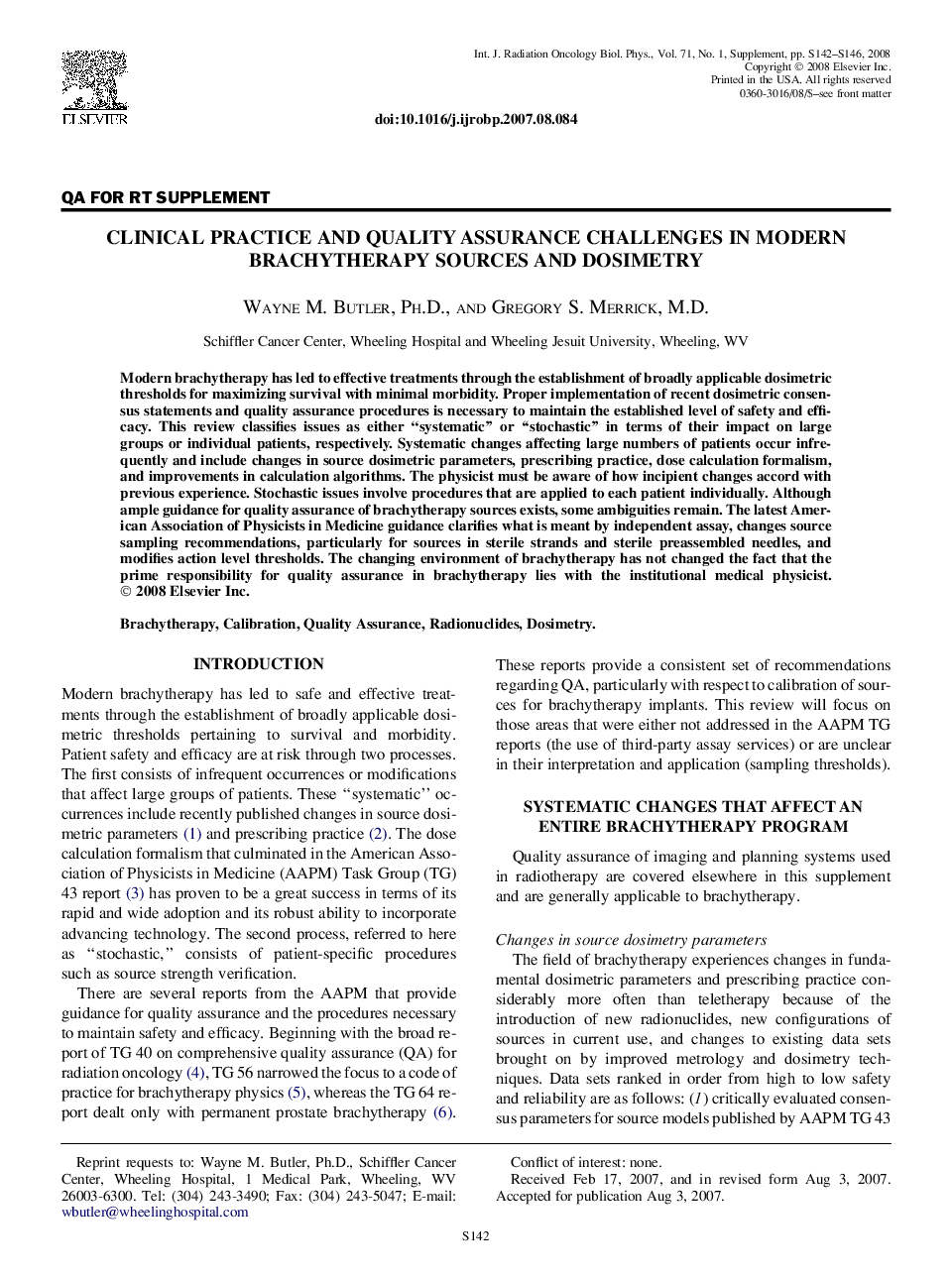| Article ID | Journal | Published Year | Pages | File Type |
|---|---|---|---|---|
| 8239328 | International Journal of Radiation Oncology*Biology*Physics | 2008 | 5 Pages |
Abstract
Modern brachytherapy has led to effective treatments through the establishment of broadly applicable dosimetric thresholds for maximizing survival with minimal morbidity. Proper implementation of recent dosimetric consensus statements and quality assurance procedures is necessary to maintain the established level of safety and efficacy. This review classifies issues as either “systematic” or “stochastic” in terms of their impact on large groups or individual patients, respectively. Systematic changes affecting large numbers of patients occur infrequently and include changes in source dosimetric parameters, prescribing practice, dose calculation formalism, and improvements in calculation algorithms. The physicist must be aware of how incipient changes accord with previous experience. Stochastic issues involve procedures that are applied to each patient individually. Although ample guidance for quality assurance of brachytherapy sources exists, some ambiguities remain. The latest American Association of Physicists in Medicine guidance clarifies what is meant by independent assay, changes source sampling recommendations, particularly for sources in sterile strands and sterile preassembled needles, and modifies action level thresholds. The changing environment of brachytherapy has not changed the fact that the prime responsibility for quality assurance in brachytherapy lies with the institutional medical physicist.
Related Topics
Physical Sciences and Engineering
Physics and Astronomy
Radiation
Authors
Wayne M. Ph.D., Gregory S. M.D.,
